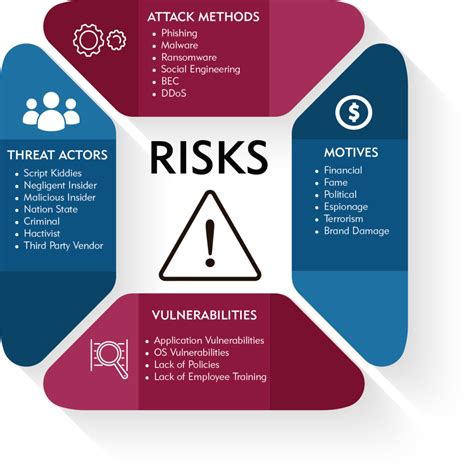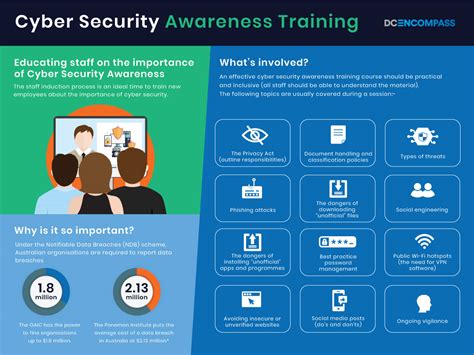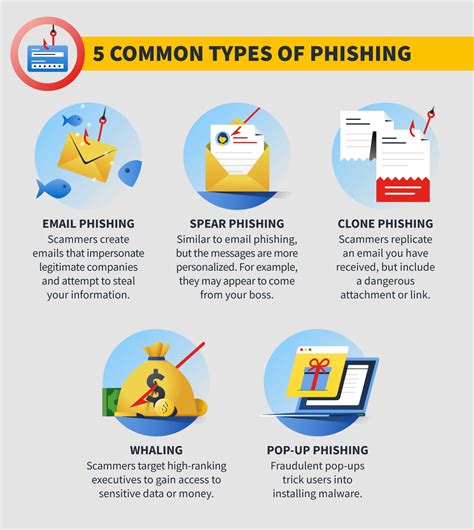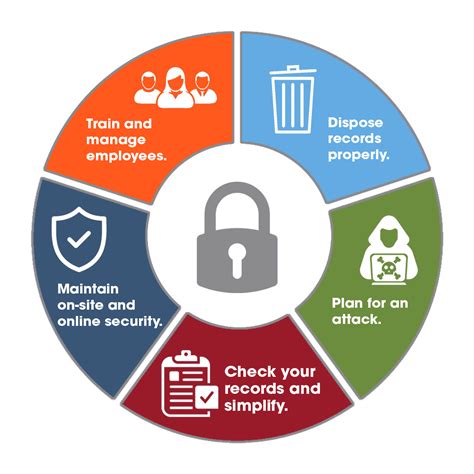Breaking News


Popular News


Learn how to educate your employees on cybersecurity risks, training programs, phishing identification, password creation, and data protection for a secure workplace.In today’s digital age, cybersecurity is a top priority for individuals and organizations alike. With cyber threats becoming more sophisticated and prevalent, it is crucial for businesses to prioritize educating their employees on cybersecurity best practices. From understanding the risks associated with cyber attacks to implementing effective training programs, there are various steps that can be taken to ensure that employees are equipped to protect sensitive data and identify potential threats. This blog post will delve into the importance of employee education in cybersecurity, the significance of training programs, and the best practices for identifying phishing attempts and creating strong passwords. By the end of this post, you will have a better understanding of how to effectively educate employees on cybersecurity and the steps that can be taken to enhance overall security within your organization.
Contents

Understanding cybersecurity risks is essential for every organization in today’s digital age. With the increasing frequency of cyber attacks, it’s crucial for employees to be aware of the potential threats that can compromise the security of sensitive information. Cybersecurity risks can come in various forms, including malware, phishing attempts, ransomware, and insider threats. Each of these risks poses a significant danger to the organization’s data and can lead to severe financial and reputational damage.
One of the most common cybersecurity risks is phishing attempts, where attackers try to obtain sensitive information such as login credentials or financial data by impersonating a trusted entity. Employees should be educated on how to identify phishing emails and the importance of not clicking on suspicious links or downloading attachments from unknown sources. Additionally, organizations should implement email filtering systems to help prevent these phishing attempts from reaching employee inboxes.
Another important aspect of understanding cybersecurity risks is recognizing the potential threat of insider attacks. While employees are often the first line of defense against external threats, it’s also crucial to be aware of the potential risks posed by disgruntled or negligent employees. Implementing strict access controls and monitoring employee activities can help mitigate the risk of insider threats and prevent unauthorized access to sensitive data.
In conclusion, understanding cybersecurity risks is a critical component of an organization’s overall security strategy. By educating employees on the potential threats and best practices for mitigating these risks, organizations can significantly reduce the likelihood of a successful cyber attack and protect their sensitive data from unauthorized access.

One of the most crucial aspects of cybersecurity for any organization is the education of its employees. It is essential for employees to be aware of the various cyber threats that exist and how to prevent them from occurring. Without proper education, employees may inadvertently expose the company to cyber attacks through their actions, such as clicking on suspicious links or sharing sensitive information.
By educating employees on best practices for cybersecurity, organizations can significantly reduce the risk of a breach occurring. Through training programs and workshops, employees can learn how to identify phishing attempts, create strong passwords, and protect sensitive data from unauthorized access. This knowledge is invaluable in safeguarding the company’s assets and reputation.
Furthermore, a well-educated workforce can serve as an additional line of defense against cyber threats. By empowering employees with the knowledge they need to recognize and respond to potential risks, organizations can create a culture of security where everyone takes ownership of protecting the company from cyber attacks. This proactive approach is essential in today’s digital landscape where cyber threats are constantly evolving.
| Ways to Educate Employees on Cybersecurity: |
|---|
|
|
|
|
|
|
|
|

Implementing Cybersecurity Training Programs within an organization is essential in today’s digital age. With the increasing frequency of cyber attacks, it is crucial for employees to be well-informed and educated on best practices for maintaining a secure online environment.
One of the primary components of Cybersecurity Training Programs is educating employees on how to identify potential threats such as phishing attempts. By providing extensive training on recognizing suspicious emails or links, employees can play a key role in preventing cyber attacks.
Furthermore, Cybersecurity Training Programs should include guidance on creating Strong Passwords to protect sensitive data. Employees must be aware of the importance of using complex passwords and regularly updating them to minimize the risk of unauthorized access.
In addition to these preventive measures, Cybersecurity Training Programs should also emphasize the significance of protecting sensitive data. Employees need to understand the potential repercussions of exposing confidential information and the role they play in safeguarding it.

Phishing attempts have become increasingly common in today’s digital landscape, posing a significant threat to businesses and individuals alike. It is crucial for employees to be able to identify and report phishing attempts to protect sensitive information and prevent data breaches.
One of the most common signs of a phishing attempt is receiving an unsolicited email asking for personal or financial information. These emails often contain urgent language, spelling and grammar errors, or suspicious links. Employees should be trained to carefully review emails and identify these red flags to avoid falling victim to phishing attacks.
Additionally, employees should be cautious of emails that request them to click on a link to log into their accounts or provide sensitive information. These fake login pages are designed to steal login credentials and compromise sensitive data. It is important for organizations to educate their employees on the importance of verifying the legitimacy of email requests and to report suspicious emails to the IT department.
By providing employees with the necessary training and resources to recognize phishing attempts, organizations can significantly reduce the risk of falling victim to these fraudulent activities, ultimately enhancing their overall cybersecurity posture.

When it comes to cybersecurity, one of the first lines of defense is having strong passwords. A strong password is essential to protecting your personal and sensitive information from cyber threats. That’s why it’s important for employees to understand the best practices for creating and maintaining strong passwords.
One way to create a strong password is to use a combination of uppercase and lowercase letters, numbers, and special characters. This makes it much harder for hackers to guess or crack the password. Additionally, using a passphrase or a combination of random words can also create a strong and unique password that is easy to remember but difficult for others to guess.
It’s also important for employees to avoid using easily guessable information in their passwords, such as their name, birthdate, or common words. Hackers often use this type of information to try to gain access to sensitive data, so it’s crucial to steer clear of using easily accessible personal information in passwords.
Lastly, implementing a regular password change policy can also help strengthen security. Encouraging employees to change their passwords on a regular basis can help prevent unauthorized access and protect sensitive data from potential threats.

Protecting sensitive data is a crucial aspect of cybersecurity best practices in any organization. It is important to educate employees about the significance of safeguarding sensitive information to prevent potential security breaches.
One way to ensure the protection of sensitive data is to implement stringent access controls. Employees should only have access to the data that is necessary for their job role, and any unnecessary access should be restricted to reduce the risk of unauthorized exposure.
Additionally, it is imperative to encrypt sensitive data to make it unreadable to unauthorized users. Encryption technologies such as SSL and TSL can be used to secure data both at rest and in transit, ensuring that it remains protected from prying eyes.
Furthermore, regular training and awareness programs should be conducted to educate employees about the best practices for protecting sensitive data. This can include teaching them about the importance of using strong passwords, recognizing phishing attempts, and understanding the risks associated with sharing sensitive information.

Why is it important to educate employees on cybersecurity best practices?
It is important to educate employees on cybersecurity best practices to minimize the risk of cyber attacks and data breaches. Employees are often the first line of defense against cyber threats, so proper training can help mitigate potential security incidents.
What are some common cybersecurity best practices that employees should be aware of?
Common cybersecurity best practices include using strong, unique passwords, being cautious of phishing emails, keeping software and systems up to date, and using secure Wi-Fi networks. Employees should also be aware of the risks of sharing sensitive information and the importance of data encryption.
How can companies effectively educate their employees on cybersecurity best practices?
Companies can effectively educate their employees on cybersecurity best practices through regular training sessions, workshops, and simulated phishing exercises. It is also important to create clear, easy-to-understand guidelines and policies, and to provide ongoing support and resources for employees.
What are the potential consequences of employees not following cybersecurity best practices?
The potential consequences of employees not following cybersecurity best practices include data breaches, financial losses, reputational damage, and legal repercussions. Negligent employee behavior can also leave the company vulnerable to cyber attacks and compromise sensitive information.
How can employees stay current with evolving cybersecurity threats and best practices?
Employees can stay current with evolving cybersecurity threats and best practices by attending cybersecurity awareness training, staying informed about the latest security trends and news, and participating in industry conferences and webinars. It is also beneficial to engage with the cybersecurity community and leverage resources provided by the company.
What role do employees play in maintaining a strong cybersecurity posture for their organization?
Employees play a critical role in maintaining a strong cybersecurity posture for their organization by following best practices, being vigilant against potential threats, and reporting any suspicious activity. They can help strengthen the company’s overall security culture and contribute to a more resilient defense against cyber attacks.
How can a culture of cybersecurity awareness benefit an organization?
A culture of cybersecurity awareness can benefit an organization by reducing the likelihood of security incidents, promoting a sense of shared responsibility among employees, and fostering a proactive approach to cybersecurity. It can also enhance the organization’s overall resilience and security posture.